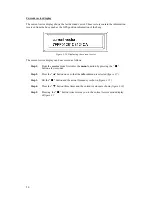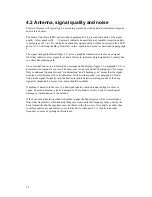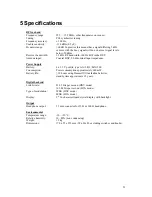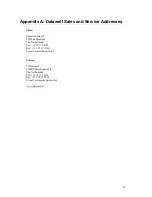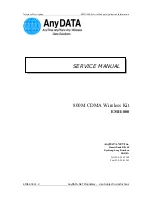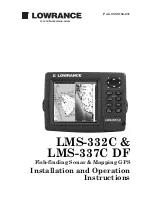
22
4.2 Antenna, signal quality and noise
Faults in this area will typically give a working system, but with bad data, intermitted reception
and/or lots of noise.
The Frame Error Rate (FER) as described in paragraph 3.6.6 gives an indication of the signal
quality. A low number (00 … 10 percent) indicates an excellent to acceptable reception quality.
A percentage of 11 to 30 % indicates questionable signal quality with many errors while a FER
above 30 % will bring the Buoy Finder 4A in the “synchronize mode” as described in paragraph
0.
The signal strength indicator (figure 3.1) gives a graphical indication of the received signal.
No lit bar indicates a low signal level, and a full scale, indicates a high signal level, usually due
to a short transmission path.
An occasional bad vector, indicated by a message on the display (figure 3.1, paragraph 3.4.3) is
normal and no reason for concern. The same goes for an occasional ''checking sync'' messages.
Only continuous flipping between ''synchronizing'' and ''checking sync'' means that the signal-
to-noise or interference ratio is troublesome. Switch on the speaker (see paragraph 3.5) and
listen to the signal. Normally only the beat-note (characteristic warbling sound) of the buoy
signal accompanied by more or less noise should be audible.
If nothing is heard or in the case of a bad signal quality check antenna cabling for short or
opens. Coaxial cables may also be damaged by sharp bends or twists. Look for mechanical
damage or contamination of the antenna.
If the beat-note is heard together with another signal the bad reception is due to interference
from other transmitters. Unfortunately things are crowded in the frequency range used by the
buoy transmitter and the spectrum must be shared with other users. It is entirely possible that
some frequencies are unusable in your vicinity due to other users. Try to shift to another
frequency in cases of prolonged interference.













